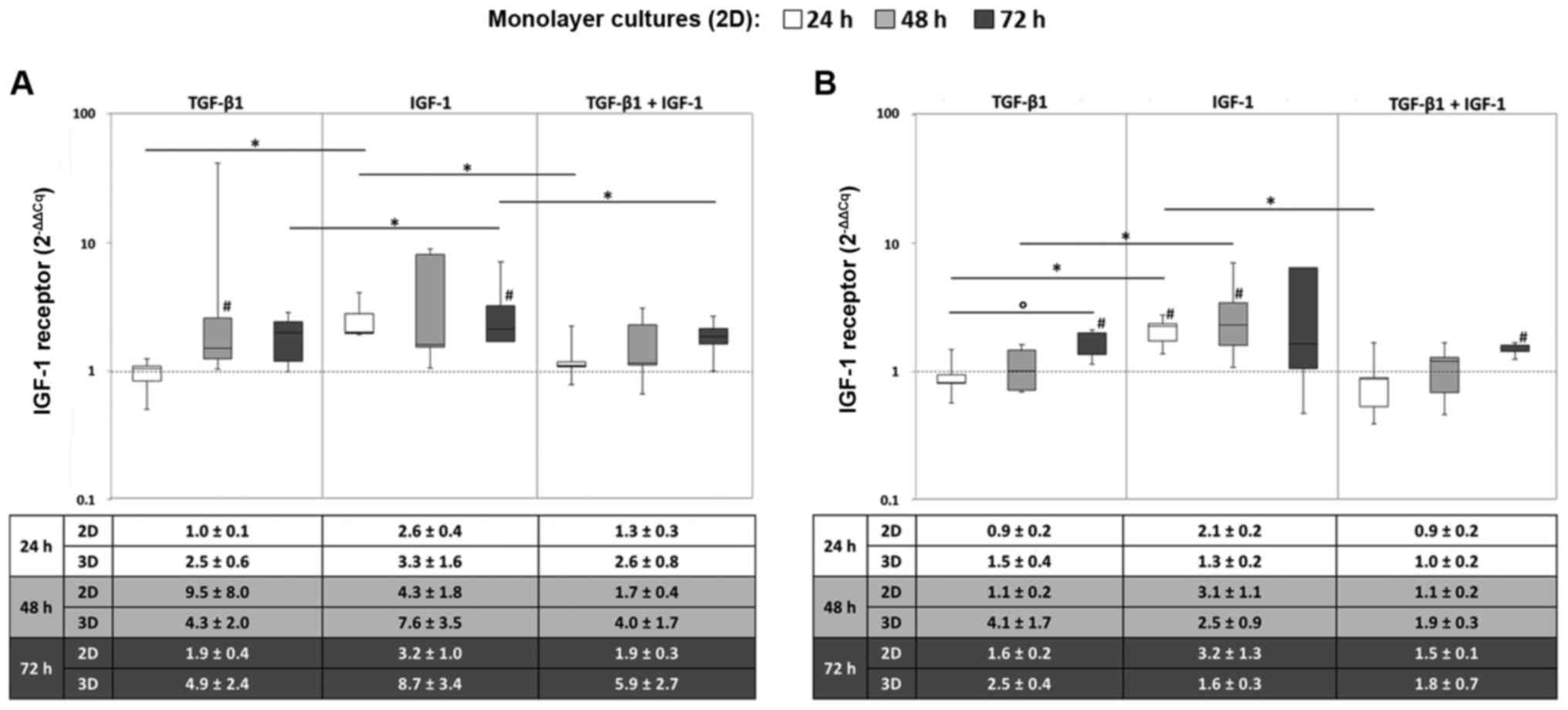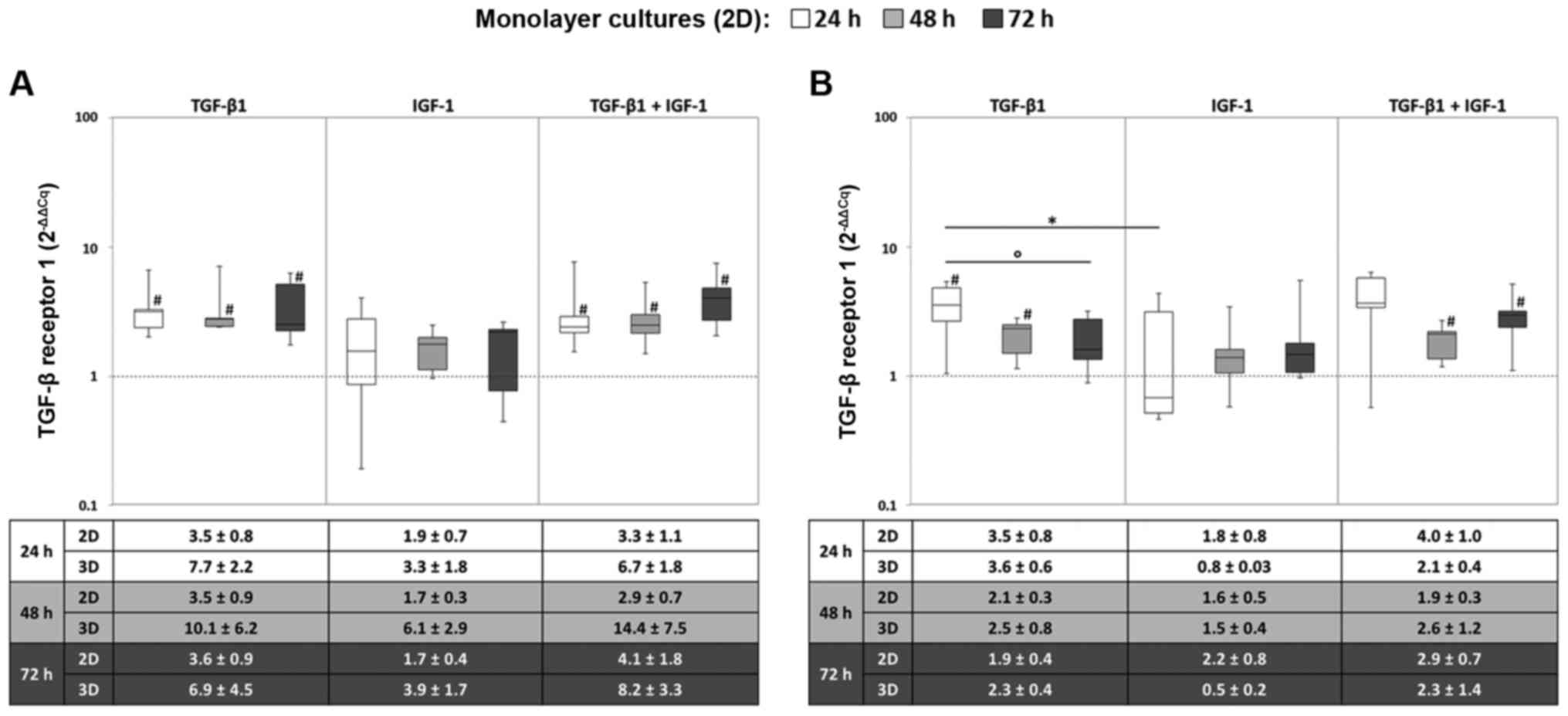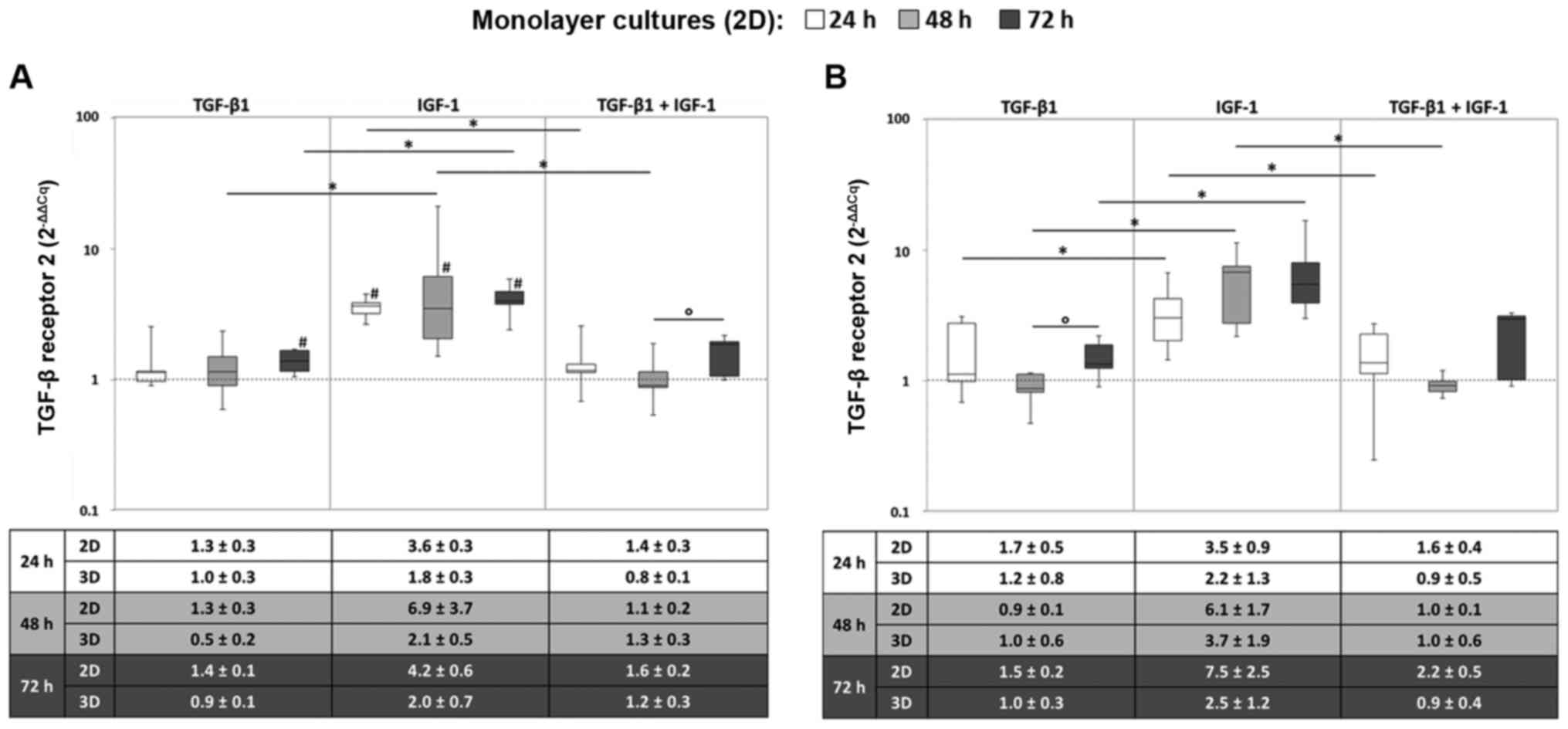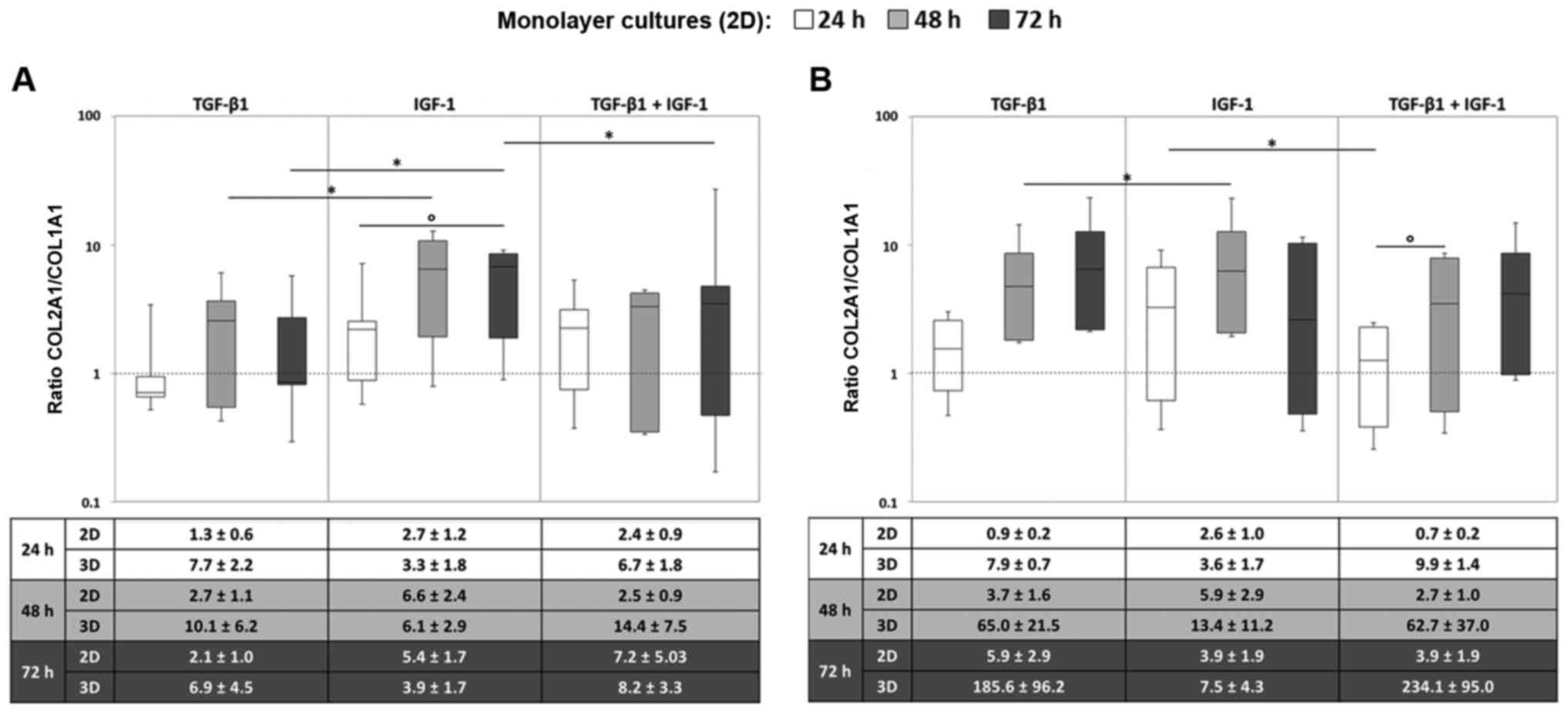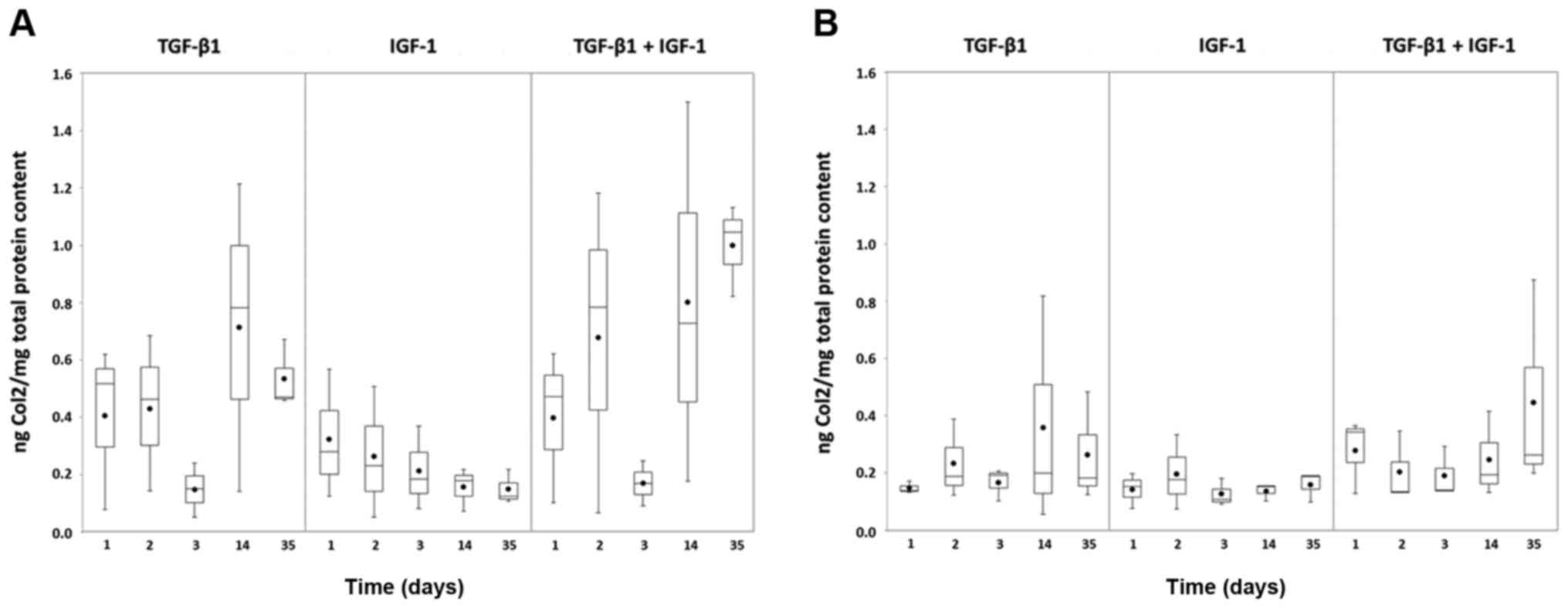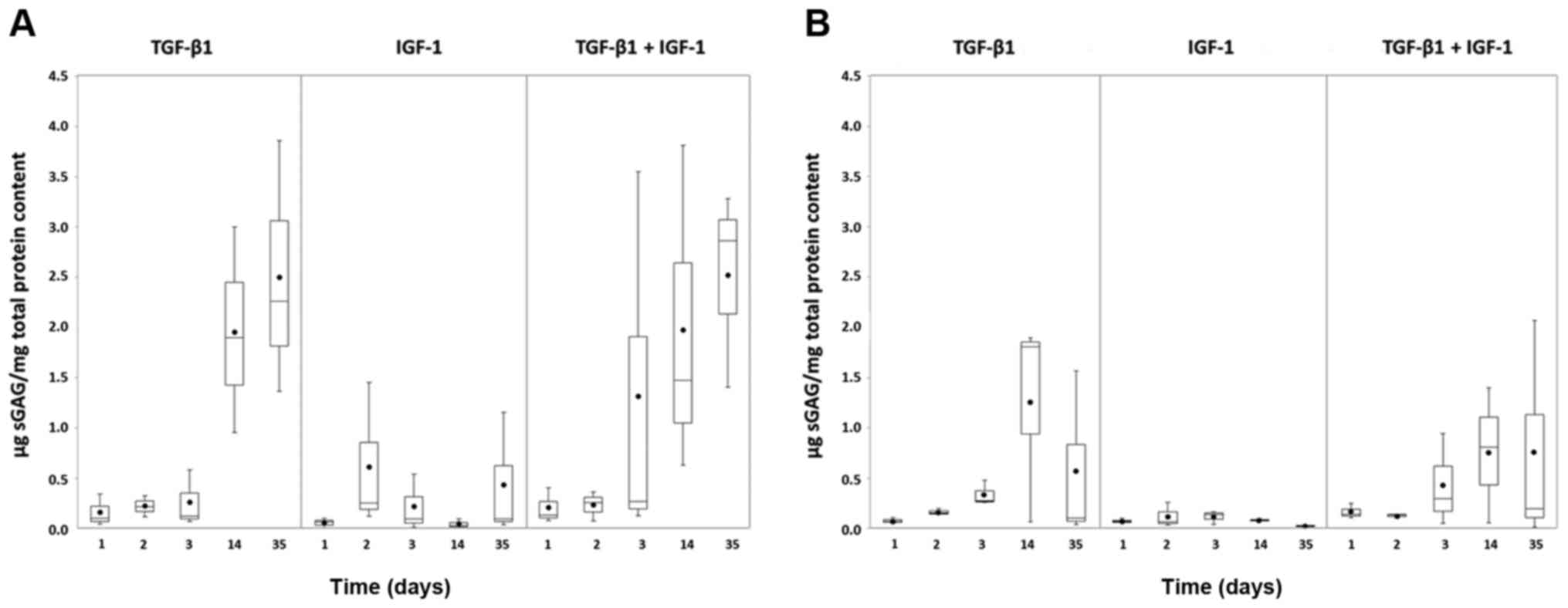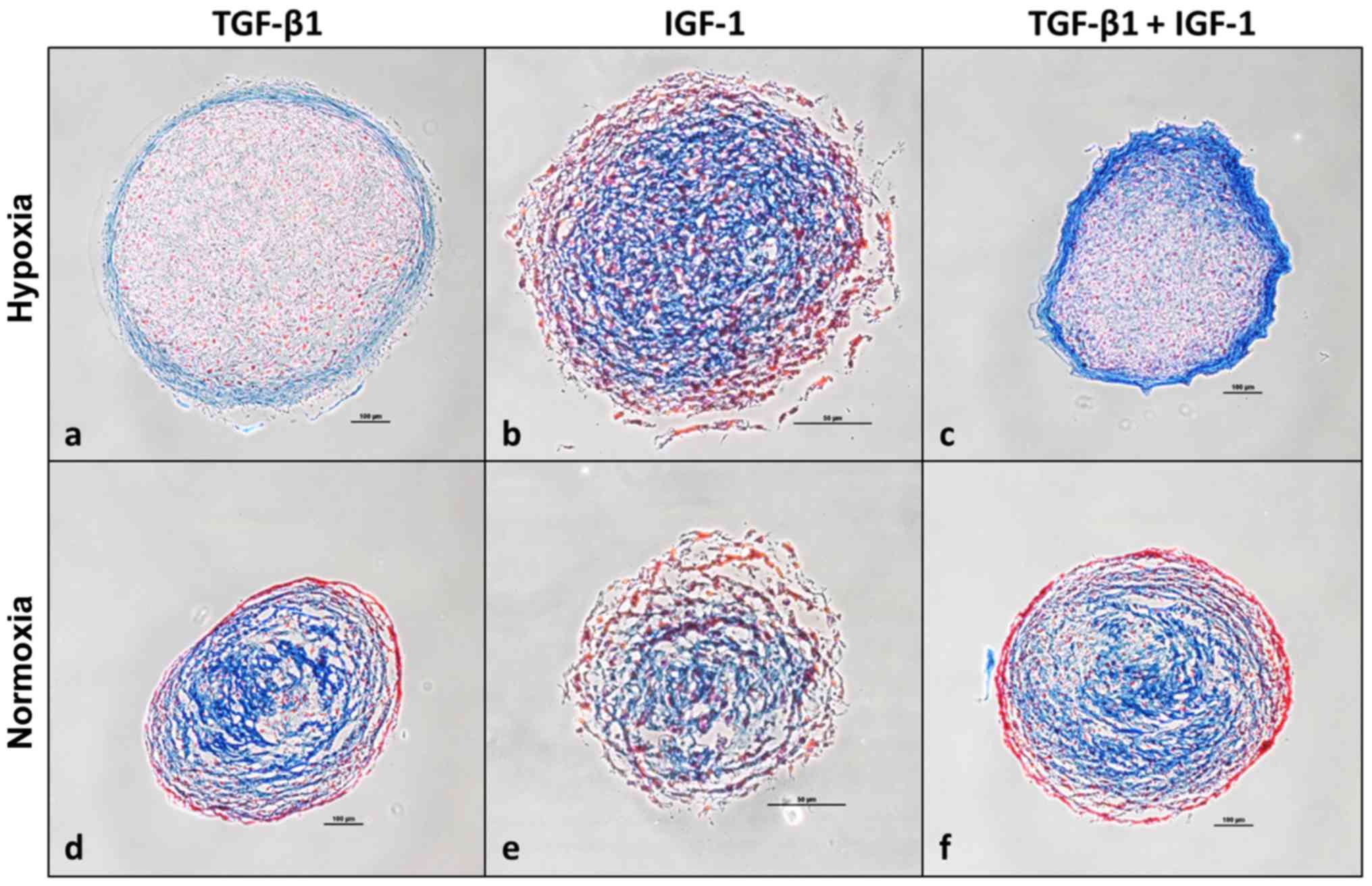|
1
|
Loeser RF Jr: Aging cartilage and
osteoarthritis - What's the link? Sci Aging Knowl Env.
2004:pe312004. View Article : Google Scholar
|
|
2
|
Chiang H and Jiang C-C: Repair of
articular cartilage defects: Review and perspectives. J Formos Med
Assoc. 108:87–101. 2009. View Article : Google Scholar : PubMed/NCBI
|
|
3
|
Shi Y, Ma J, Zhang X, Li H, Jiang L and
Qin J: Hypoxia combined with spheroid culture improves cartilage
specific function in chondrocytes. Integr Biol. 7:289–297. 2015.
View Article : Google Scholar
|
|
4
|
Tekari A, Luginbuehl R, Hofstetter W and
Egli RJ: Transforming growth factor beta signaling is essential for
the autonomous formation of cartilage-like tissue by expanded
chondrocytes. PLoS One. 10:e01208572015. View Article : Google Scholar : PubMed/NCBI
|
|
5
|
Arzi B, DuRaine GD, Lee CA, Huey DJ,
Borjesson DL, Murphy BG, Hu JC, Baumgarth N and Athanasiou KA:
Cartilage immunoprivilege depends on donor source and lesion
location. Acta Biomater. 23:72–81. 2015. View Article : Google Scholar : PubMed/NCBI
|
|
6
|
Schulze-Tanzil G: Activation and
dedifferentiation of chondrocytes: Implications in cartilage injury
and repair. Ann Anat. 91:325–338. 2009. View Article : Google Scholar
|
|
7
|
Duan L, Ma B, Liang Y, Chen J, Zhu W, Li M
and Wang D: Cytokine networking of chondrocyte dedifferentiation in
vitro and its implications for cell-based cartilage therapy. Am J
Transl Res. 7:194–208. 2015.PubMed/NCBI
|
|
8
|
Bhardwaj N, Devi D and Mandal BB:
Tissue-engineered cartilage: The crossroads of biomaterials, cells
and stimulating factors. Macromol Biosci. 15:153–182. 2015.
View Article : Google Scholar
|
|
9
|
Fickert S, Gerwien P, Helmert B,
Schattenberg T, Weckbach S, Kaszkin-Bettag M and Lehmann L:
One-year clinical and radiological results of a prospective,
investigator-initiated trial examining a novel, purely autologous
3-dimensional autologous chondrocyte transplantation product in the
knee. Cartilage. 3:27–42. 2012. View Article : Google Scholar : PubMed/NCBI
|
|
10
|
van der Kraan PM, Buma P, van Kuppevelt T
and van den Berg WB: Interaction of chondrocytes, extracellular
matrix and growth factors: Relevance for articular cartilage tissue
engineering. Osteoarthritis Cartilage. 10:631–637. 2002. View Article : Google Scholar : PubMed/NCBI
|
|
11
|
van Osch GJ, van den Berg WB, Hunziker EB
and Häuselmann HJ: Differential effects of IGF-1 and TGF beta-2 on
the assembly of proteoglycans in pericellular and territorial
matrix by cultured bovine articular chondrocytes. Osteoarthritis
Cartilage. 6:187–195. 1998. View Article : Google Scholar : PubMed/NCBI
|
|
12
|
Giovannini S, Diaz-Romero J, Aigner T,
Mainil-Varlet P and Nesic D: Population doublings and percentage of
S100-positive cells as predictors of in vitro chondrogenicity of
expanded human articular chondrocytes. J Cell Physiol. 222:411–420.
2010. View Article : Google Scholar
|
|
13
|
Chubinskaya S, Hakimiyan A, Pacione C,
Yanke A, Rappoport L, Aigner T, Rueger DC and Loeser RF:
Synergistic effect of IGF-1 and OP-1 on matrix formation by normal
and OA chondrocytes cultured in alginate beads. Osteoarthritis
Cartilage. 15:421–430. 2007. View Article : Google Scholar
|
|
14
|
McQuillan DJ, Handley CJ, Campbell MA,
Bolis S, Milway VE and Herington AC: Stimulation of proteoglycan
biosynthesis by serum and insulin-like growth factor-I in cultured
bovine articular cartilage. Biochem J. 240:423–430. 1986.
View Article : Google Scholar : PubMed/NCBI
|
|
15
|
Guerne PA, Sublet A and Lotz M: Growth
factor responsiveness of human articular chondrocytes: Distinct
profiles in primary chondrocytes, subcultured chondrocytes, and
fibroblasts. J Cell Physiol. 158:476–484. 1994. View Article : Google Scholar : PubMed/NCBI
|
|
16
|
Jones JI and Clemmons DR: Insulin-like
growth factors and their binding proteins: Biological actions.
Endocr Rev. 16:3–34. 1995.PubMed/NCBI
|
|
17
|
Giannoni P and Cancedda R: Articular
chondrocyte culturing for cell-based cartilage repair: Needs and
perspectives. Cells Tissues Organs. 184:1–15. 2006. View Article : Google Scholar : PubMed/NCBI
|
|
18
|
Fukumoto T, Sperling JW, Sanyal A,
Fitzsimmons JS, Reinholz GG, Conover CA and O'Driscoll SW: Combined
effects of insulin-like growth factor-1 and transforming growth
factor-beta1 on periosteal mesenchymal cells during chondrogenesis
in vitro. Osteoarthritis Cartilage. 11:55–64. 2003. View Article : Google Scholar
|
|
19
|
Redini F, Galera P, Mauviel A, Loyau G and
Pujol JP: Transforming growth factor beta stimulates collagen and
glycosaminoglycan biosynthesis in cultured rabbit articular
chondrocytes. FEBS Lett. 234:172–176. 1988. View Article : Google Scholar : PubMed/NCBI
|
|
20
|
Shi Y and Massagué J: Mechanisms of
TGF-beta signaling from cell membrane to the nucleus. Cell.
113:685–700. 2003. View Article : Google Scholar : PubMed/NCBI
|
|
21
|
Bassing CH, Howe DJ, Segarini PR, Donahoe
PK and Wang XF: A single heteromeric receptor complex is sufficient
to mediate biological effects of transforming growth factor-beta
ligands. J Biol Chem. 269:14861–14864. 1994.PubMed/NCBI
|
|
22
|
Jonitz A, Lochner K, Peters K, Salamon A,
Pasold J, Mueller-Hilke B, Hansmann D and Bader R: Differentiation
capacity of human chondrocytes embedded in alginate matrix. Connect
Tissue Res. 52:503–511. 2011. View Article : Google Scholar : PubMed/NCBI
|
|
23
|
Jonitz A, Lochner K, Tischer T, Hansmann D
and Bader R: TGF-β1 and IGF-1 influence the redifferentiation
capacity of human chondrocytes in 3D pellet cultures in relation to
different oxygen concentrations. Int J Mol Med. 30:666–672.
2012.PubMed/NCBI
|
|
24
|
Pasold J, Zander K, Heskamp B, Grüttner C,
Lüthen F, Tischer T, Jonitz-Heincke A and Bader R: Positive impact
of IGF-1-coupled nanoparticles on the differentiation potential of
human chondrocytes cultured on collagen scaffolds. Int J
Nanomedicine. 10:1131–1143. 2015. View Article : Google Scholar : PubMed/NCBI
|
|
25
|
Yang Y-H and Barabino GA: Differential
morphology and homogeneity of tissue-engineered cartilage in
hydrodynamic cultivation with transient exposure to insulin-like
growth factor-1 and transforming growth factor-β1. Tissue Eng Part
A. 19:2349–2360. 2013. View Article : Google Scholar : PubMed/NCBI
|
|
26
|
Davies LC, Blain EJ, Gilbert SJ, Caterson
B and Duance VC: The potential of IGF-1 and TGFbeta1 for promoting
'adult' articular cartilage repair: An in vitro study. Tissue Eng
Part A. 14:1251–1261. 2008. View Article : Google Scholar : PubMed/NCBI
|
|
27
|
Mizuta H, Sanyal A, Fukumoto T,
Fitzsimmons JS, Matsui N, Bolander ME, Oursler MJ and O'Driscoll
SW: The spatiotemporal expression of TGF-beta1 and its receptors
during periosteal chondrogenesis in vitro. J Orthop Res.
20:562–574. 2002. View Article : Google Scholar : PubMed/NCBI
|
|
28
|
Inagaki M, Wang Z and Carr BI:
Transforming growth factor beta 1 selectively increases gene
expression of the serine/threonine kinase receptor 1 (SKR1) in
human hepatoma cell lines. Cell Struct Funct. 19:305–313. 1994.
View Article : Google Scholar : PubMed/NCBI
|
|
29
|
Nørgaard P, Spang-Thomsen M and Poulsen
HS: Expression and autoregulation of transforming growth factor
beta receptor mRNA in small-cell lung cancer cell lines. Br J
Cancer. 73:1037–1043. 1996. View Article : Google Scholar : PubMed/NCBI
|
|
30
|
deMoura MD, Chamoun D, Resnick CE and
Adashi EY: Insulin-like growth factor (IGF)-I stimulates IGF-I and
type 1 IGF receptor expression in cultured rat granulosa cells:
Autocrine regulation of the intrafollicular IGF-I system.
Endocrine. 13:103–110. 2000. View Article : Google Scholar : PubMed/NCBI
|
|
31
|
Barbara NP, Wrana JL and Letarte M:
Endoglin is an accessory protein that interacts with the signaling
receptor complex of multiple members of the transforming growth
factor-β super-family. J Biol Chem. 274:584–594. 1999. View Article : Google Scholar : PubMed/NCBI
|
|
32
|
Longobardi L, O'Rear L, Aakula S,
Johnstone B, Shimer K, Chytil A, Horton WA, Moses HL and Spagnoli
A: Effect of IGF-I in the chondrogenesis of bone marrow mesenchymal
stem cells in the presence or absence of TGF-beta signaling. J Bone
Miner Res. 21:626–636. 2006. View Article : Google Scholar : PubMed/NCBI
|
|
33
|
Yaeger PC, Masi TL, de Ortiz JL, Binette
F, Tubo R and McPherson JM: Synergistic action of transforming
growth factor-beta and insulin-like growth factor-I induces
expression of type II collagen and aggrecan genes in adult human
articular chondrocytes. Exp Cell Res. 237:318–325. 1997. View Article : Google Scholar
|
|
34
|
Shakibaei M, John T and Rahmanzadeh R:
Collaboration with the insulin-like growth factor-I receptor.
Biochem J. 342:615–623
|
|
35
|
Landry J, Bernier D, Ouellet C, Goyette R
and Marceau N: Spheroidal aggregate culture of rat liver cells:
Histotypic reorganization, biomatrix deposition, and maintenance of
functional activities. J Cell Biol. 101:914–923. 1985. View Article : Google Scholar : PubMed/NCBI
|
|
36
|
Anderer U and Libera J: In vitro
engineering of human autogenous cartilage. J Bone Miner Res.
17:1420–1429. 2002. View Article : Google Scholar : PubMed/NCBI
|
|
37
|
Czech MP: Signal transmission by the
insulin-like growth factors. Cell. 59:235–238. 1989. View Article : Google Scholar : PubMed/NCBI
|
|
38
|
Iwasa K, Hayashi S, Fujishiro T, Kanzaki
N, Hashimoto S, Sakata S, Chinzei N, Nishiyama T, Kuroda R and
Kurosaka M: PTEN regulates matrix synthesis in adult human
chondrocytes under oxidative stress. J Orthop Res. 32:231–237.
2014. View Article : Google Scholar
|
|
39
|
Sakata S, Hayashi S, Fujishiro T, Kawakita
K, Kanzaki N, Hashimoto S, Iwasa K, Chinzei N, Kihara S, Haneda M,
et al: Oxidative stress-induced apoptosis and matrix loss of
chondrocytes is inhibited by eicosapentaenoic acid. J Orthop Res.
33:359–365. 2015. View Article : Google Scholar
|
|
40
|
Bohensky J, Terkhorn SP, Freeman TA, Adams
CS, Garcia JA, Shapiro IM and Srinivas V: Regulation of autophagy
in cartilage: HIF-2 suppresses chondrocyte autophagy. Arthritis
Rheum. 60:1406–1415. 2009. View Article : Google Scholar : PubMed/NCBI
|
|
41
|
Babur BK, Ghanavi P, Levett P, Lott WB,
Klein T, Cooper-White JJ, Crawford R and Doran MR: The interplay
between chondrocyte redifferentiation pellet size and oxygen
concentration. PLoS One. 8:e588652013. View Article : Google Scholar : PubMed/NCBI
|















